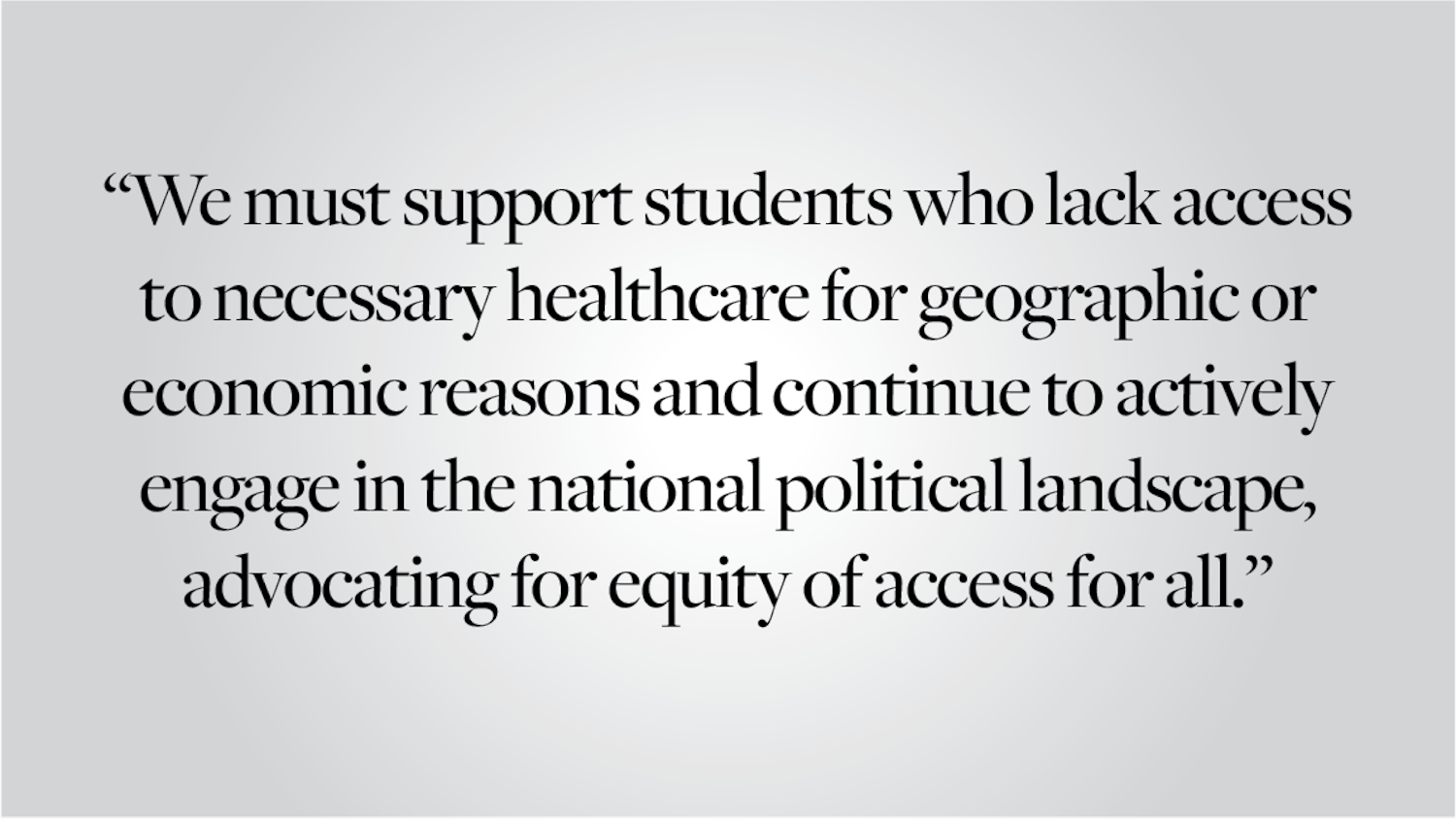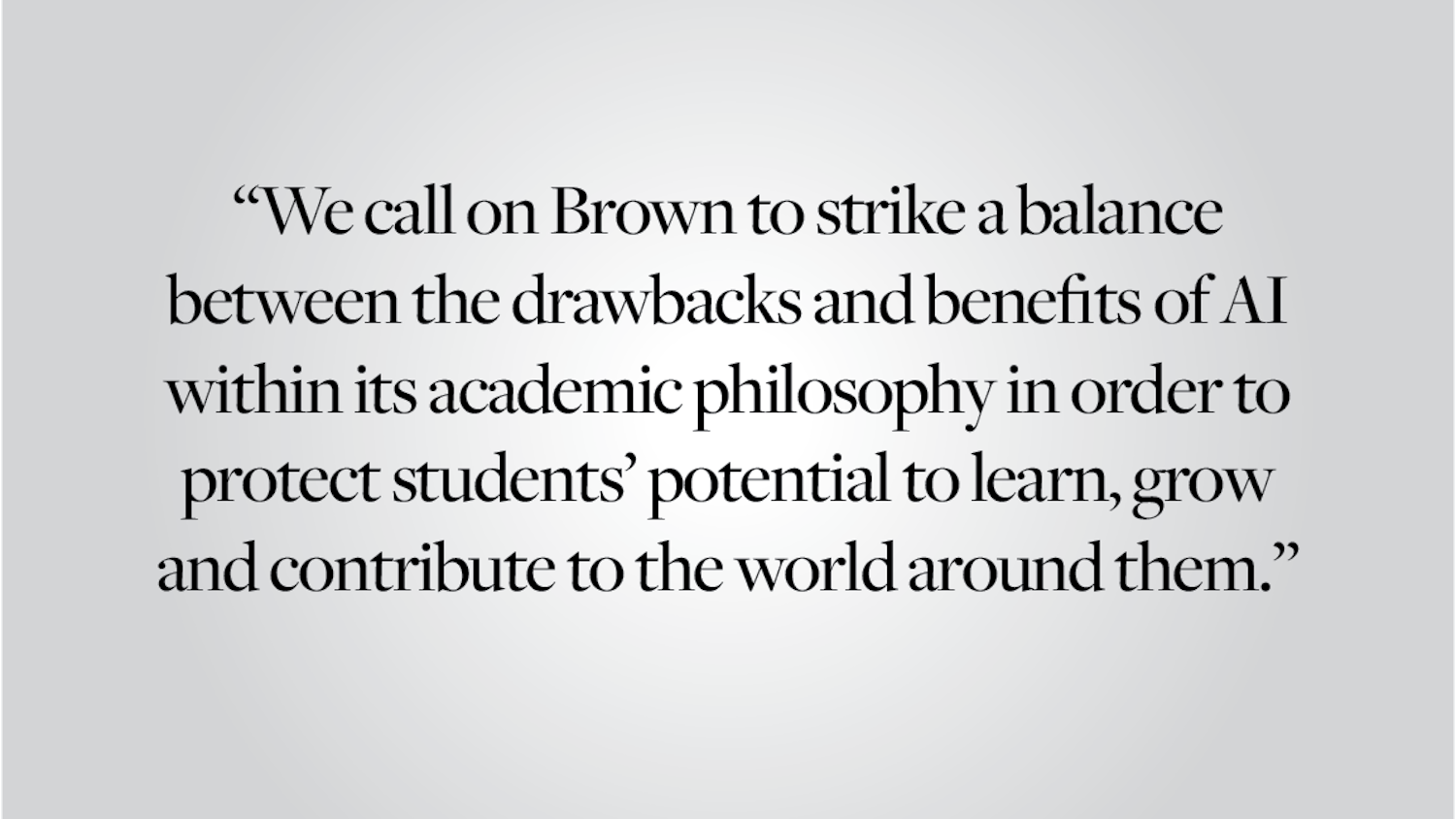Resources for high school applicants use diversity statistics to help students choose where to apply, forcing universities to compete for numbers that suggest a quilted student body. Brown, like many elite institutions, excels at this. But getting 1,600 varied high school graduates does not guarantee an inclusive, accessible campus. Indeed, observations of students in dining halls, housing or classrooms do not always reflect the integration that the University boasts on paper.
President Christina Paxson has repeatedly demonstrated her commitment to “promoting freedom of expression,” an important component in encouraging students to engage in areas outside their comfort zones. Indeed, while concentrations do not always represent the full range of students — particularly with the underrepresentation of minorities and women in the sciences — classrooms play a vital role in bringing students together. Seminars, teach-ins and community forums all facilitate the sharing of ideas between people of different backgrounds. But academic interactions are only part of how we learn from each other.
A large component of the growth in empathy and shaping of values comes from ongoing conversations and an exchange of narratives that requires deep friendships. In this regard, it is not clear that the student body is reaching its potential.
Outside the classroom, many students are less likely to interact with people of different backgrounds, in part due to opportunities like program housing and pre-orientation programs that foster friendships among people of similar backgrounds. In Keeney Quadrangle and Andrews Hall, first-years are sorted into doubles and units that look like the video that welcomes travelers to the United States at airport immigration desks. But the opportunity to join Greek societies and program housing inevitably groups together people from similar backgrounds, which often results in the separation of students along lines of race, geography and socioeconomic status.
Before most students even arrive on campus, friendships are formed among members of the incoming class who moved in early, either due to athletics or pre-orientation programs. Since a third of first-years move in before their peers, these students receive personalized support from upperclassmen and begin to develop long-lasting friendships that appear imposing to students who arrive on the official move-in day.
These opportunities offer valuable support to students, but perhaps too often, we become dependent on their security and do not push out of our comfort zones.
The obstacles to fully profiting from diversity extend beyond College Hill. According to a Census Bureau study in 2013, 78 percent of Americans self-identified as entirely white, 17 percent as Latino, 13 percent as entirely black or African American and 5 percent as entirely Asian. But a study over the summer by the Public Religion Research Institute found that if a white American has 100 friends, 91 are white, one is black, one is Asian and one is Latino. Similarly, the average black American would have 83 black friends and eight white friends.
The University relies far too heavily on orientation to facilitate dialogues about not only living in but also engaging with a diverse community. In envisioning a more integrated community, the University must continue to encourage on-campus institutions — including Brown/RISD Hillel, the Sarah Doyle Women’s Center, and the Brown Center for Students of Color — to not only support their own communities but also engage with other communities.
It is valuable for all students to have a space where they can be among people who share their backgrounds and values and have been through similar experiences. But these spaces should not necessarily dictate who we eat with in dining halls or who we study with in libraries. While the University is indeed responsible for coordinating this institutional change, the onus rests primarily on the students to engage with and appreciate the rare environment that is the Brown community.
Editorials are written by The Herald’s editorial page board: its editors, Alexander Kaplan ’15 and James Rattner ’15, and its members, Natasha Bluth ’15, Manuel Contreras ’16, Baxter DiFabrizio ’15, Manuel Monti-Nussbaum ’15, Katherine Pollock ’16 and Himani Sood ’15. Send comments to editorials@browndailyherald.com.
ADVERTISEMENT




